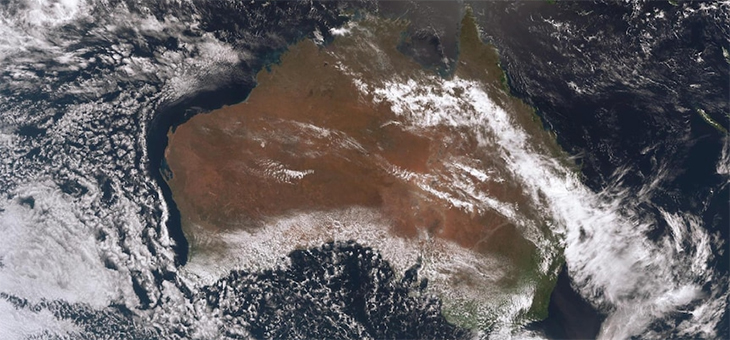If you’re trying to plan a picnic or outdoor event, you may sometimes feel as if the weather forecast has overpromised on rain, but then underdelivered.
But is the forecast inaccurate? Or are you reading it incorrectly?
We spoke to senior meteorologist Diana Eadie, manager of forecasting services at the Bureau of Meteorology in Victoria, to find out.
How can I tell if it is going to rain at a certain time and place?
Read the fine print! Just because the icon looks rainy, it doesn’t mean it will be raining all day or in your specific location.
In fact, there could be no rain at all.
For a more accurate prediction, Ms Eadie recommends looking at the writing beside the icon and the top temperature.
“There is a lot of detailed text that will tell you what time of day, and what parts of Melbourne can expect rain,” she said.
The app or the online equivalent Met Eye are also useful.
If you put in your location, it will give you the forecast for a three-kilomtre-square area around you.
You can also see an hour-by-hour forecast, where the bureau will tell you the likelihood of rain and how much rain there might be each hour.
What does the percentage chance of rain mean?
There are two parts to the bureau’s rain forecast: the chance of rain and the amount of possible rainfall.
Beware, they should both be read completely separately!
“I think that does get misinterpreted at times,” Ms Eadie said.
“The percentage chance of rain means how likely it will be that a forecast area will have 0.2mm of rain.”
Ms Eadie says the reason the bureau uses 0.2mm, is because that is the lowest amount of rainfall that can be measured.
So, if the forecast says there is a 60 per cent chance of rain, that means there is a 60 per cent chance of at least 0.2mm of rain falling in your area.
It also means there is a 40 per cent chance of no rain even if the icon shows raindrops.
What about possible rainfall?
The other part of the forecast is the amount of rain that may fall.
“Whenever measurable rainfall is forecast, this field is represented as a range between two values [otherwise it will appear as 0mm],” the bureau says.
“The first value means the location has a 50 per cent chance of receiving at least that amount of rain.
“The second represents a 25 per cent chance of receiving at least that amount.”
In this example, there isn’t an 80 per cent chance that the Melbourne area will receive 2-4mm of rain.
There is an 80 per cent chance the Melbourne area will receive 0.2mm of rain.
If it does rain, there is a 50 per cent chance Melbourne will receive at least 2mm of rain and a 25 per cent chance the city will receive at least 4mm.
“So, if it says there is an 80 per cent chance of rain, but it is only going to be 0-1mm, that probably isn’t going to have [as much of] an impact on your plans as a high volume of rainfall,” Ms Eadie said.
How does the bureau come up with the weather forecast?
The Bureau of Meteorology gets most of its data from hundreds of automated weather stations across the country, radars, and satellite imagery.
The Himawari satellite sends back images every 10 minutes giving meteorologists information about storms and cyclones forming, how low-pressure systems are moving through and even smoke rising from significant fires.
You can see the satellite yourself on the bureau’s website.
Ms Eadie said all of this data about temperature, humidity, wind and more was then fed into a supercomputer.
“We use some really complex mathematical modelling for the atmosphere and the ocean,” she said.
“That helps us to project what the weather systems will do into the future.”
Our weather model is called the Australian Community Climate and Earth-System Stimulator, or ACCESS.
Ms Eadie said advancements in the quality of information had allowed the bureau to consistently improve the accuracy of its forecasts.
How accurate is the forecast?
Predicting future weather is, by its nature, an inexact science, Ms Eadie said.
“The models that we use have an inherent uncertainty … generally the shorter the time frame the less errors,” she said.
The bureau’s forecasters rely on Australia’s ACCESS weather model, but they also look at the weather models from Japan, Europe and America.
If all the models are in agreement, then the bureau has more confidence in its forecast, than if the models are all saying different things.
The types of weather systems in the area can also change how confident the bureau is in the forecast.
Ms Eadie said low pressure systems and cold fronts (which can lead to sudden weather changes and storm activity) are harder to predict than high pressure systems (which tend to lead to calmer weather).
During the coronavirus lockdowns and border closures, there was some speculation that having fewer planes in the sky impacted the accuracy of weather forecasts.
Ms Eadie said that was not the case in Australia because weather observations from planes were not a primary source of data for the bureau.
“From our perspective, it hasn’t changed how we forecast, or [created] a change in the quality of the data we receive,” she said.
 © 2020 Australian Broadcasting Corporation. All rights reserved.
© 2020 Australian Broadcasting Corporation. All rights reserved.
ABC Content Disclaimer

